What is hematocrit in blood test mean. Hematocrit in Blood Tests: Understanding Its Significance and Measurement Techniques
What does hematocrit measure in a blood test. How is hematocrit calculated. What are the normal ranges for hematocrit in adults. What factors can affect hematocrit levels. How is hematocrit different from hemoglobin.
The Fundamentals of Hematocrit: A Crucial Blood Test Component
Hematocrit (HCT) is a vital component of blood tests that provides valuable insights into an individual’s health status. Derived from the English term “hemato-” and the Greek word “krites,” hematocrit measures the volume of packed red blood cells (RBCs) relative to whole blood. This measurement is essential for identifying conditions such as anemia or polycythemia and monitoring treatment responses.
Understanding hematocrit is crucial for healthcare professionals and patients alike. But what exactly does this test reveal about our blood composition?
What is Hematocrit?
Hematocrit, also known as packed cell volume (PCV), is the percentage of blood volume occupied by red blood cells. It is expressed as a ratio or percentage and provides information about the concentration of RBCs in the blood. This measurement is typically part of a complete blood count (CBC) and is often interpreted alongside other blood parameters.
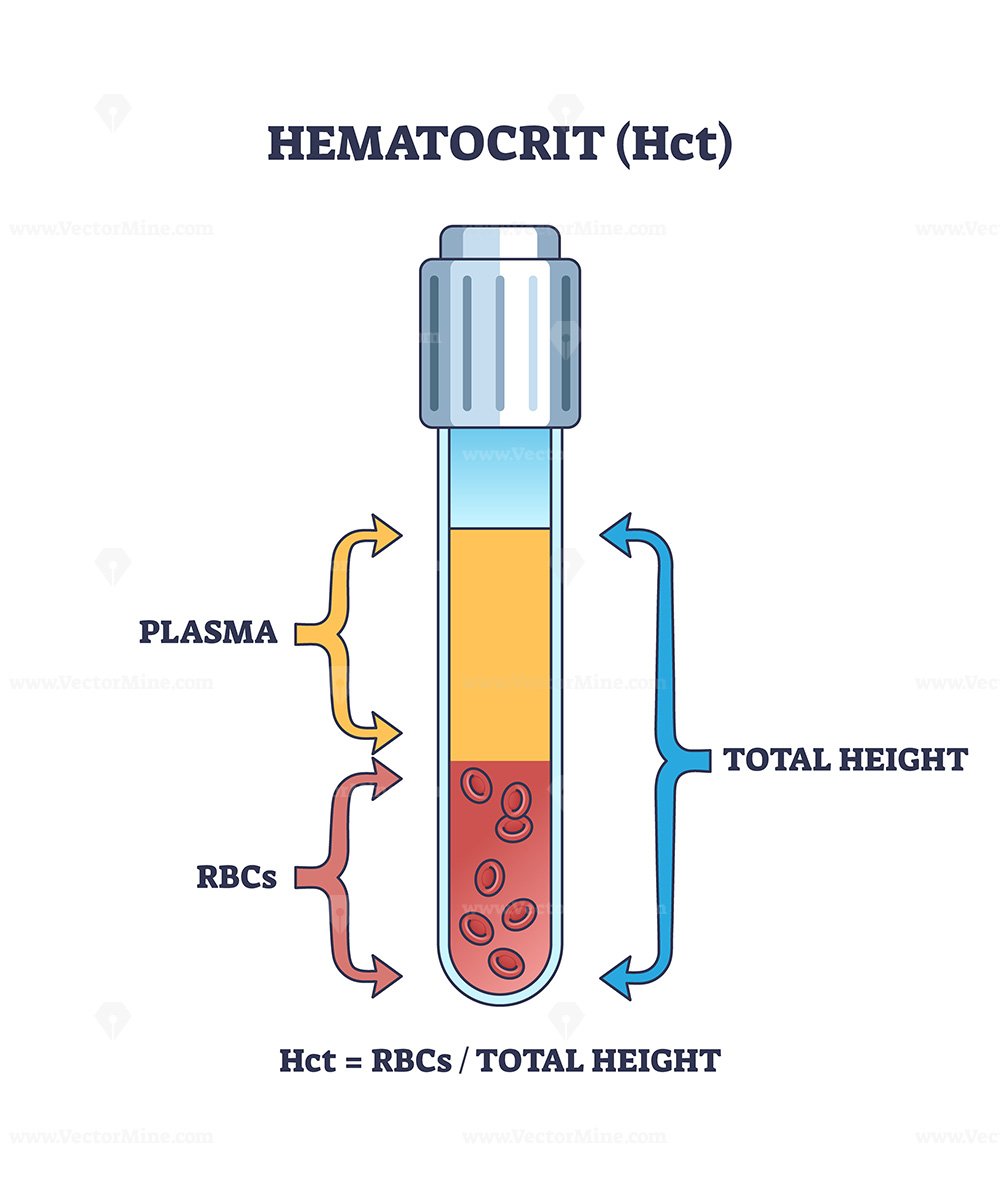
Normal Hematocrit Ranges
The normal hematocrit range varies depending on age, sex, and other factors. For adult males, the typical range is 40% to 54%, while for adult females, it is 36% to 48%. These ranges may differ slightly between laboratories and populations.
- Adult males: 40% – 54%
- Adult females: 36% – 48%
It’s important to note that these ranges are general guidelines, and individual results should be interpreted in the context of a person’s overall health and other laboratory findings.
Hematocrit Measurement Techniques: From Traditional to Modern
Over the years, the methods for measuring hematocrit have evolved, becoming more precise and efficient. Let’s explore the various techniques used to determine hematocrit levels.
Macro-hematocrit Method
The macro-hematocrit method, also known as the Wintrobe method, is a traditional technique that uses a glass tube and a centrifuge machine. This method involves the following steps:
- Blood is collected in a Wintrobe hematocrit tube, which is 110 mm long and graduated from 0 to 100 mm.
- The tube is filled with blood up to the 100 mm mark using a Pasteur pipette.
- The filled tube is centrifuged at 3000 rpm for 30 minutes.
- After centrifugation, the blood separates into three distinct layers: RBCs at the bottom, white blood cells (WBCs) and platelets in the middle (buffy coat), and plasma at the top.
- The height of the RBC column is measured and reported as the hematocrit percentage.
While this method is still used in some primary care settings and for teaching purposes, it has largely been replaced by more modern techniques.
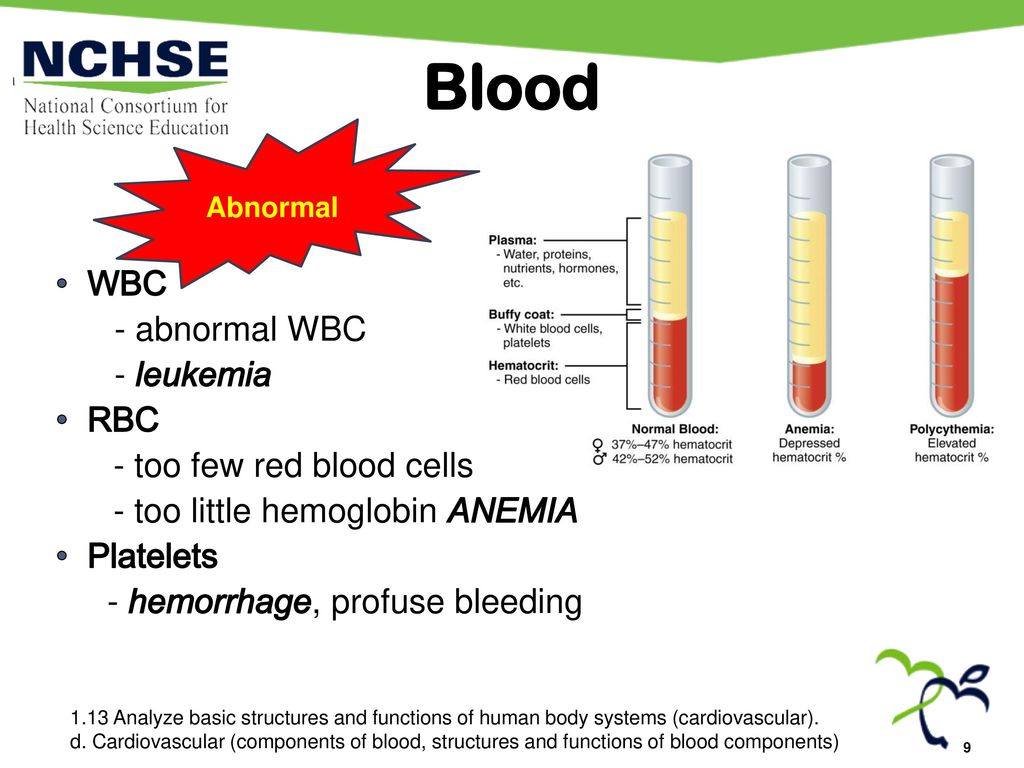
Micro-hematocrit Method
The micro-hematocrit method is an improvement over the macro-hematocrit technique, requiring less blood and time. This method is particularly beneficial for patients from whom blood collection is challenging, such as pediatric patients or those with hypovolemia. The procedure involves:
- Collecting blood in a small capillary tube (typically 75 mm long and 1 mm in diameter).
- Sealing both ends of the tube with clay sealant or heat.
- Centrifuging the tube at 11,000 to 12,000 rpm for 4 to 5 minutes.
- Reading the results using a scale on a tube holder or a microhematocrit card reader.
The micro-hematocrit method maintains the same principle as the macro-hematocrit technique but offers greater convenience and efficiency.
Automated Hematology Analyzers
In modern clinical settings, automated hematology analyzers have largely replaced manual methods for measuring hematocrit. These analyzers use the Coulter principle to determine hematocrit levels. Here’s how it works:
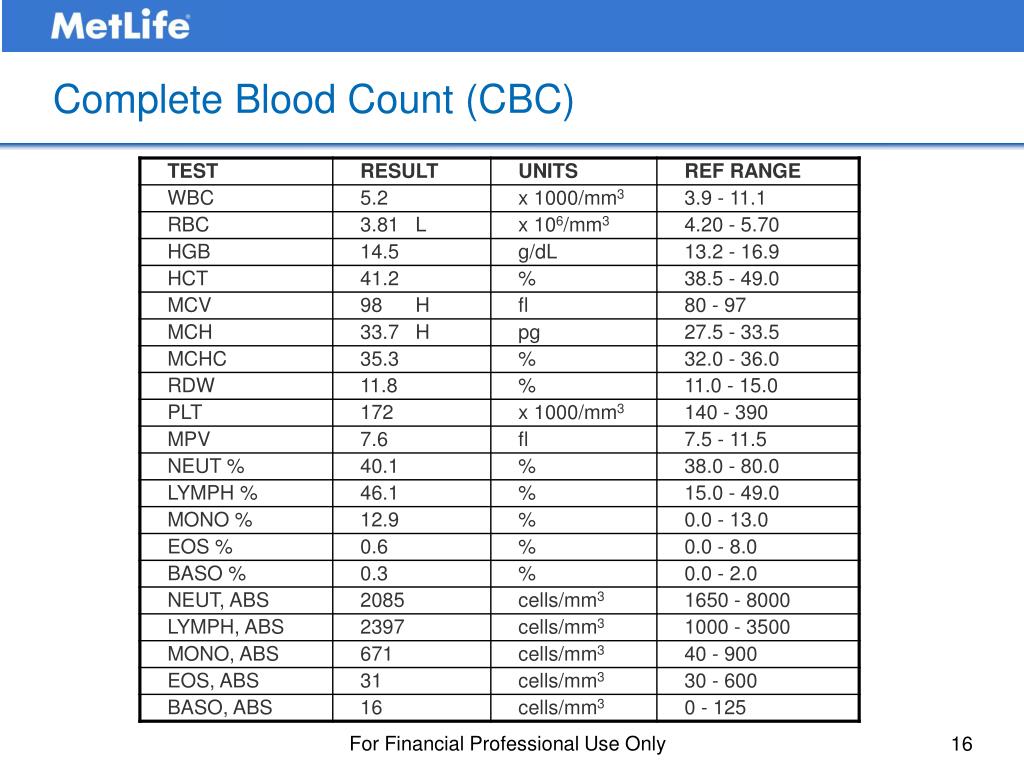
- The analyzer measures the average RBC size and number by detecting impedance as blood passes through a passage between two electrodes.
- This method provides rapid and accurate results as part of a complete blood count.
- Automated analyzers reduce the potential for human error and increase the efficiency of blood testing.
Factors Influencing Hematocrit Levels: Physiological and Pathological Considerations
Hematocrit levels can be affected by various physiological and pathological conditions. Understanding these factors is crucial for accurate interpretation of test results.
Physiological Factors
Several natural factors can influence hematocrit levels:
- Age: Newborns typically have higher hematocrit levels, which gradually decrease during the neonatal period.
- Sex: Adult males generally have higher hematocrit levels than adult females.
- Pregnancy: Pregnant women often show lower hematocrit due to hemodilution.
- Altitude: People living at high altitudes tend to have higher hematocrit levels due to persistent hypoxia, which stimulates RBC production.
Pathological Factors
Various medical conditions can affect hematocrit levels:

- Anemia: Conditions that decrease RBC production or increase RBC destruction can lead to lower hematocrit levels.
- Polycythemia: Disorders causing increased RBC production can result in elevated hematocrit levels.
- Dehydration: Reduced plasma volume can lead to a relative increase in hematocrit.
- Blood loss: Acute or chronic blood loss can cause a decrease in hematocrit.
Clinical Significance of Hematocrit: Diagnosing and Monitoring Health Conditions
Hematocrit plays a crucial role in diagnosing various health conditions and monitoring treatment progress. Healthcare professionals use hematocrit levels, often in conjunction with other blood parameters, to assess a patient’s overall health status.
Diagnosing Anemia
Low hematocrit levels are often indicative of anemia, a condition characterized by a decrease in the number of RBCs or their oxygen-carrying capacity. Anemia can result from various factors, including:
- Iron deficiency
- Vitamin B12 or folate deficiency
- Chronic diseases
- Hemolytic disorders
- Bone marrow suppression
By monitoring hematocrit levels, healthcare providers can diagnose anemia and track the effectiveness of treatment interventions.
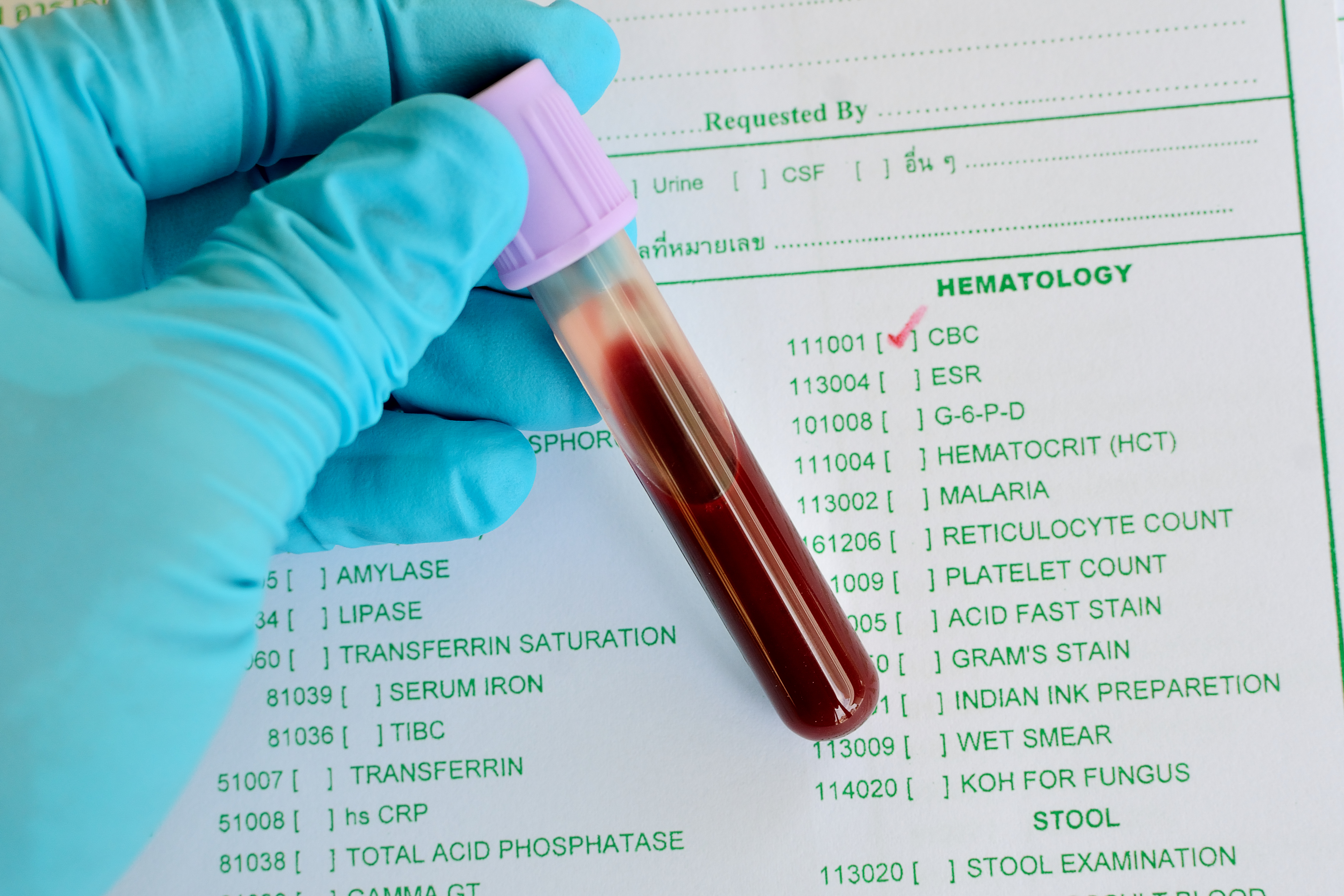
Identifying Polycythemia
Elevated hematocrit levels may indicate polycythemia, a condition characterized by an increased number of RBCs. Polycythemia can be primary (such as polycythemia vera) or secondary (due to chronic hypoxia or certain tumors). Regular hematocrit measurements help in the early detection and management of these conditions.
Assessing Hydration Status
Hematocrit levels can provide insights into a patient’s hydration status. Dehydration can lead to a relative increase in hematocrit due to reduced plasma volume. Conversely, overhydration may result in a decrease in hematocrit. This information is particularly valuable in managing patients with fluid balance disorders or those undergoing intensive care.
Hematocrit vs. Hemoglobin: Understanding the Difference
While hematocrit and hemoglobin are both important blood parameters, they measure different aspects of red blood cells. Understanding the distinction between these two measurements is crucial for accurate interpretation of blood test results.
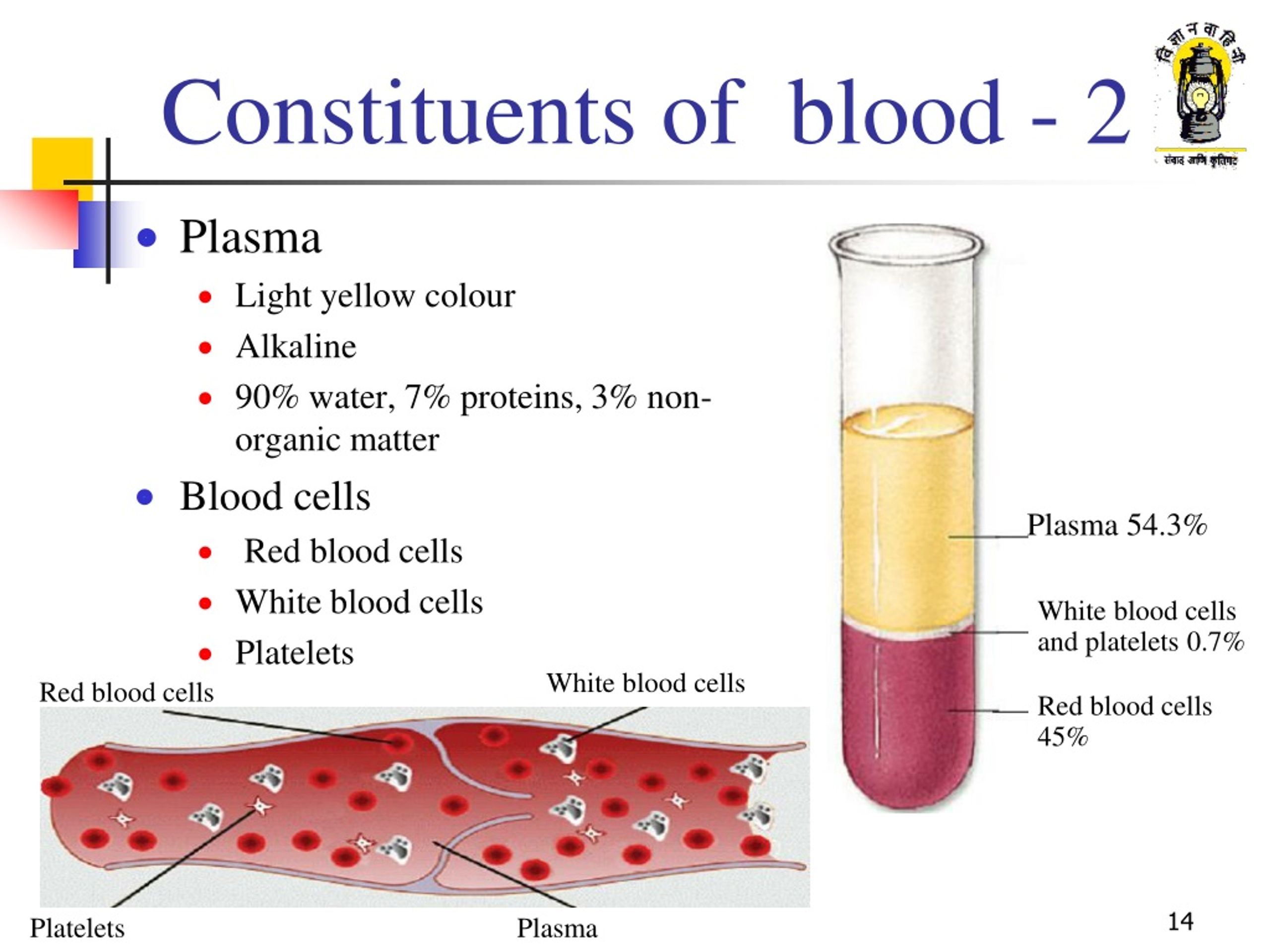
Hematocrit: Volume Measurement
Hematocrit measures the volume percentage of RBCs in whole blood. It provides information about the concentration of RBCs relative to the total blood volume. This measurement is particularly useful in assessing conditions that affect RBC production or destruction.
Hemoglobin: Oxygen-Carrying Capacity
Hemoglobin, on the other hand, measures the concentration of the oxygen-carrying protein within RBCs. It indicates the blood’s oxygen-carrying capacity and is expressed in grams per deciliter (g/dL). Hemoglobin levels are crucial for evaluating oxygen delivery to tissues and organs.
While hematocrit and hemoglobin are closely related, they can sometimes provide different insights into a patient’s health status. For example, in certain types of anemia, hemoglobin levels may be disproportionately low compared to hematocrit, indicating a problem with hemoglobin synthesis rather than RBC production.
Interpreting Hematocrit Results: Beyond the Numbers
Interpreting hematocrit results requires careful consideration of various factors. Healthcare professionals must look beyond the raw numbers to provide accurate diagnoses and appropriate treatment plans.
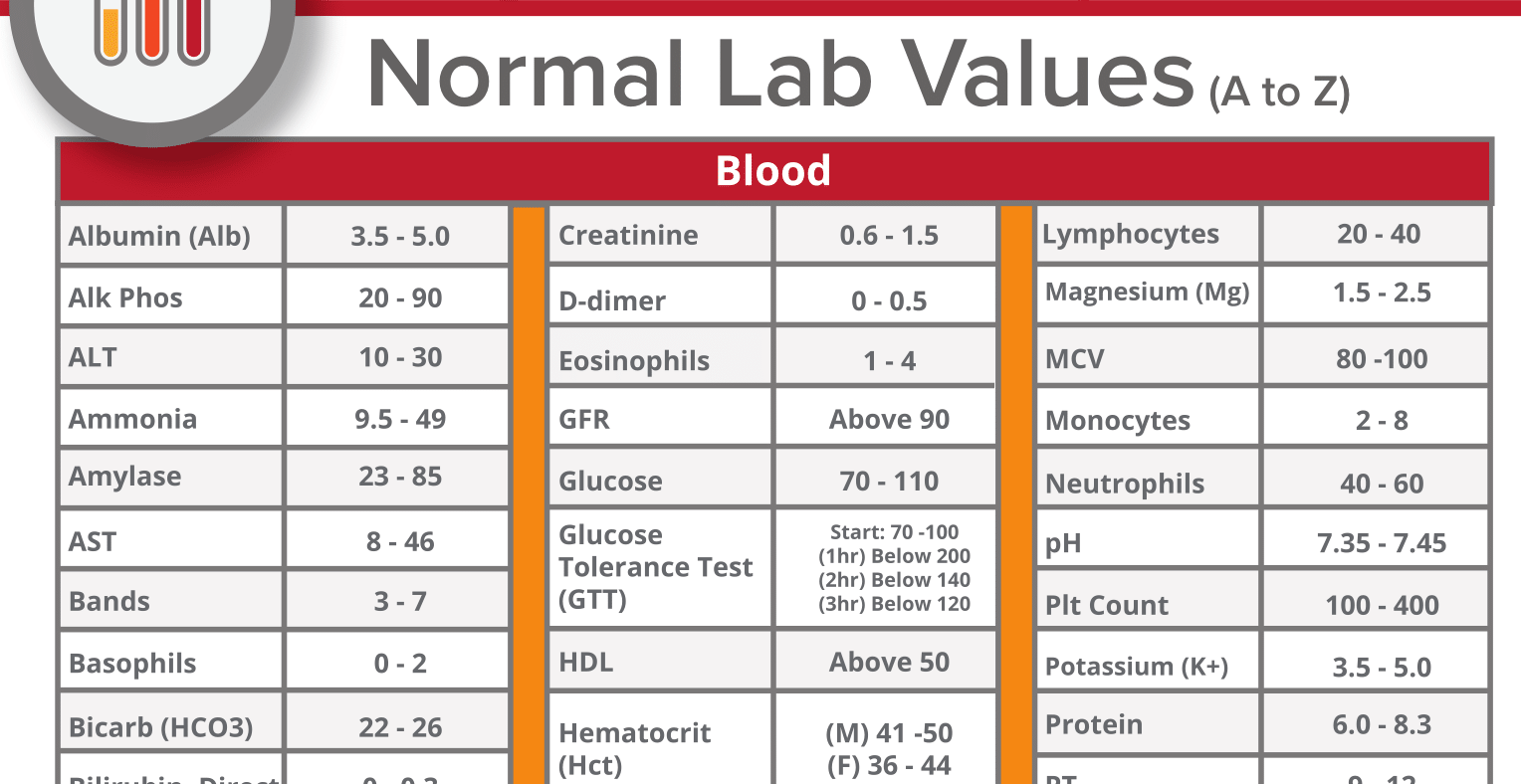
Contextual Interpretation
When interpreting hematocrit results, it’s essential to consider:
- Patient’s age, sex, and overall health status
- Presence of any underlying medical conditions
- Recent changes in diet, medication, or lifestyle
- Other blood test results, particularly hemoglobin levels
- Patient’s symptoms and clinical presentation
Trends Over Time
A single hematocrit measurement provides a snapshot of a patient’s blood composition. However, tracking hematocrit levels over time can offer more valuable insights. Trends in hematocrit can help healthcare providers:
- Monitor the progression of chronic conditions
- Assess the effectiveness of treatments
- Detect early signs of developing health issues
- Make informed decisions about adjusting treatment plans
Advances in Hematocrit Testing: Future Perspectives
As medical technology continues to advance, the field of hematology is experiencing significant improvements in testing methods and result interpretation. These advancements are enhancing the accuracy, efficiency, and accessibility of hematocrit testing.
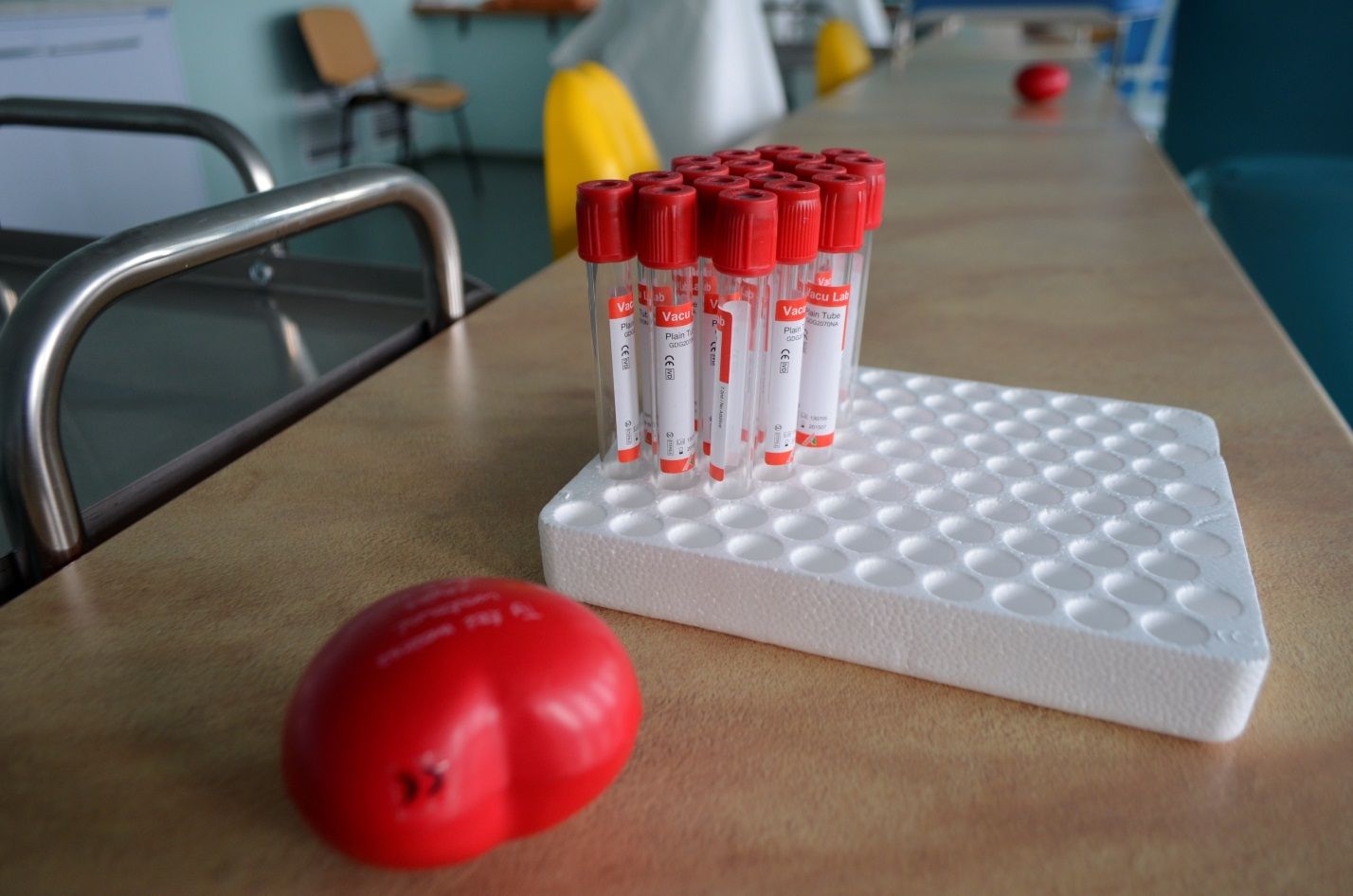
Point-of-Care Testing
Point-of-care testing for hematocrit is becoming increasingly popular, allowing for rapid results in various healthcare settings. These portable devices offer several advantages:
- Quick turnaround time for results
- Reduced need for laboratory infrastructure
- Improved patient care in remote or resource-limited settings
- Enhanced ability to make real-time clinical decisions
Integration with Artificial Intelligence
The integration of artificial intelligence (AI) and machine learning algorithms with hematology analyzers is revolutionizing the interpretation of blood test results. These AI-powered systems can:
- Identify subtle patterns and anomalies in blood parameters
- Provide more accurate predictions of potential health issues
- Assist healthcare providers in making informed diagnostic decisions
- Contribute to personalized medicine approaches
As these technologies continue to evolve, they promise to enhance the diagnostic power of hematocrit testing and improve patient outcomes.
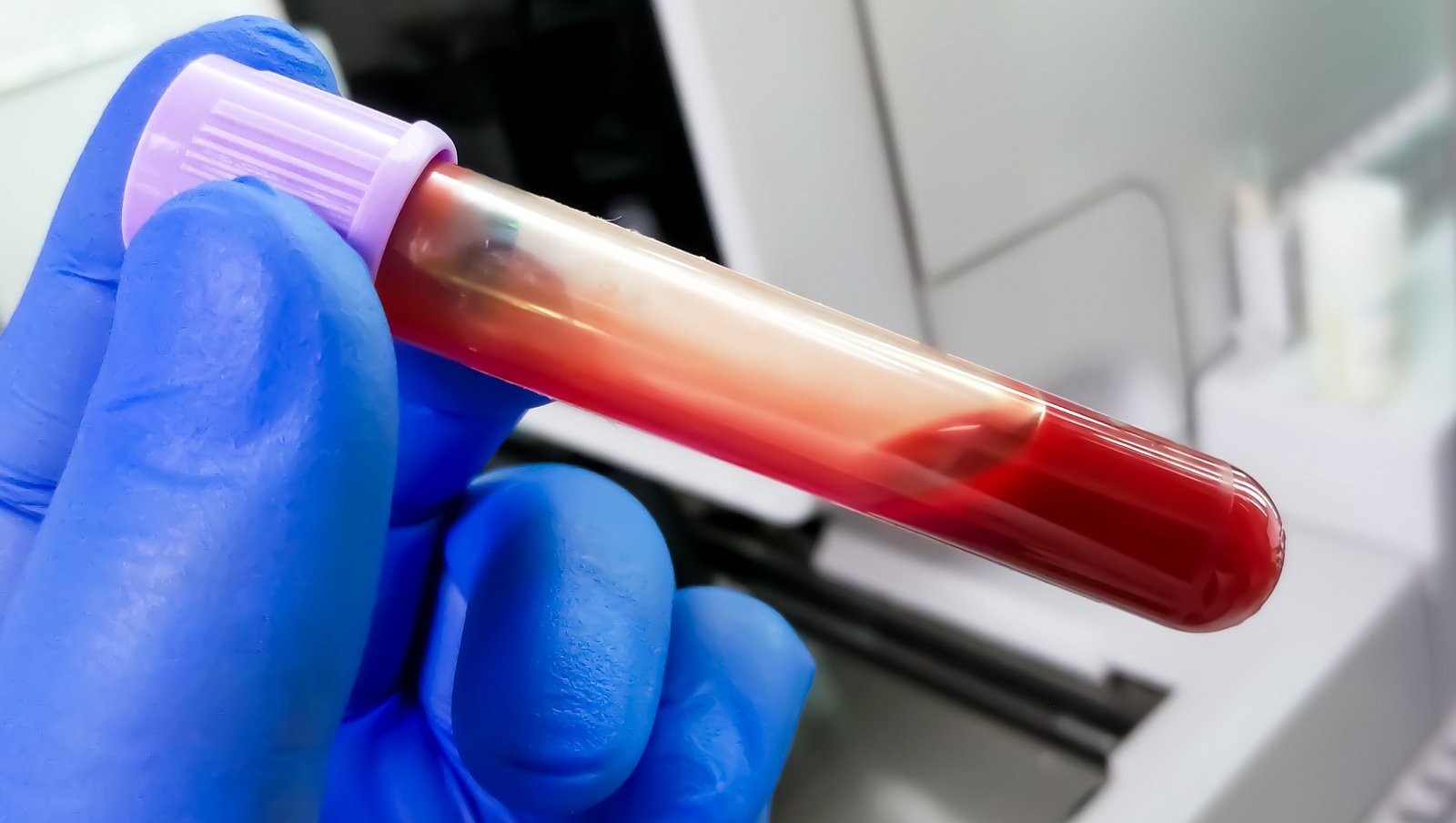
In conclusion, hematocrit remains a fundamental component of blood testing, providing crucial insights into a patient’s health status. From its humble beginnings with manual measurement techniques to the advanced automated analyzers of today, hematocrit testing has come a long way. As we look to the future, ongoing advancements in technology and our understanding of blood disorders will continue to refine and expand the role of hematocrit in clinical practice. By staying informed about these developments, healthcare professionals can better utilize hematocrit measurements to provide optimal care for their patients.
Hematocrit – StatPearls – NCBI Bookshelf
Himel Mondal; Saran Lotfollahzadeh.
Author Information and Affiliations
Last Update: January 2, 2023.
Introduction
The term “hematocrit (HCT)” originated from English “hemato-“ and Greek “krites.” HCT measures the volume of packed red blood cells (RBC) relative to whole blood. Hence, it is also known and reported as a packed cell volume (PCV). It is a simple test to identify conditions like anemia or polycythemia and also to monitor response to the treatment. A glass tube and a centrifuge machine are sufficient to measure HCT. After centrifugation, the component of blood separates into three distinct parts. From below upwards, the layers are – a layer of red blood cells (RBC), a layer of white blood cells(WBC) and platelets, and a layer of plasma at the top. This method of determining HCT by Wintrobe hematocrit tube is known as the “macro-hematocrit” method.[1]
A Wintrobe tube is a narrow glass tube measuring 110-mm-long, with graduation from 0 to 100 mm in both ascending and descending order. This method has been succeeded by the “micro-hematocrit” method which uses a small capillary tube instead of a Wintrobe hematocrit tube. It requires less quantity of blood as well as less time requirement for the testing procedure. It is beneficial for patients from whom blood collection is difficult (e.g., pediatric patients/hypovolemia). However, the principle of the test remains the same as the “macro-hematocrit” method. HCT calculation is by dividing the lengths of the packed RBC layer by the length of total cells and plasma. As it is a ratio, it doesn’t have any unit. Multiplying the ratio by 100 gives the accurate value, which is the accepted reporting style for HCT. A normal adult male shows an HCT of 40% to 54% and a female shows 36% to 48%.[2] Though these two methods are still in use in some settings of primary care and medical teachings, they are widely replaced in the majority of settings by an automated analyzer, where HCT reports get generated along with the complete blood count.
This method has been succeeded by the “micro-hematocrit” method which uses a small capillary tube instead of a Wintrobe hematocrit tube. It requires less quantity of blood as well as less time requirement for the testing procedure. It is beneficial for patients from whom blood collection is difficult (e.g., pediatric patients/hypovolemia). However, the principle of the test remains the same as the “macro-hematocrit” method. HCT calculation is by dividing the lengths of the packed RBC layer by the length of total cells and plasma. As it is a ratio, it doesn’t have any unit. Multiplying the ratio by 100 gives the accurate value, which is the accepted reporting style for HCT. A normal adult male shows an HCT of 40% to 54% and a female shows 36% to 48%.[2] Though these two methods are still in use in some settings of primary care and medical teachings, they are widely replaced in the majority of settings by an automated analyzer, where HCT reports get generated along with the complete blood count.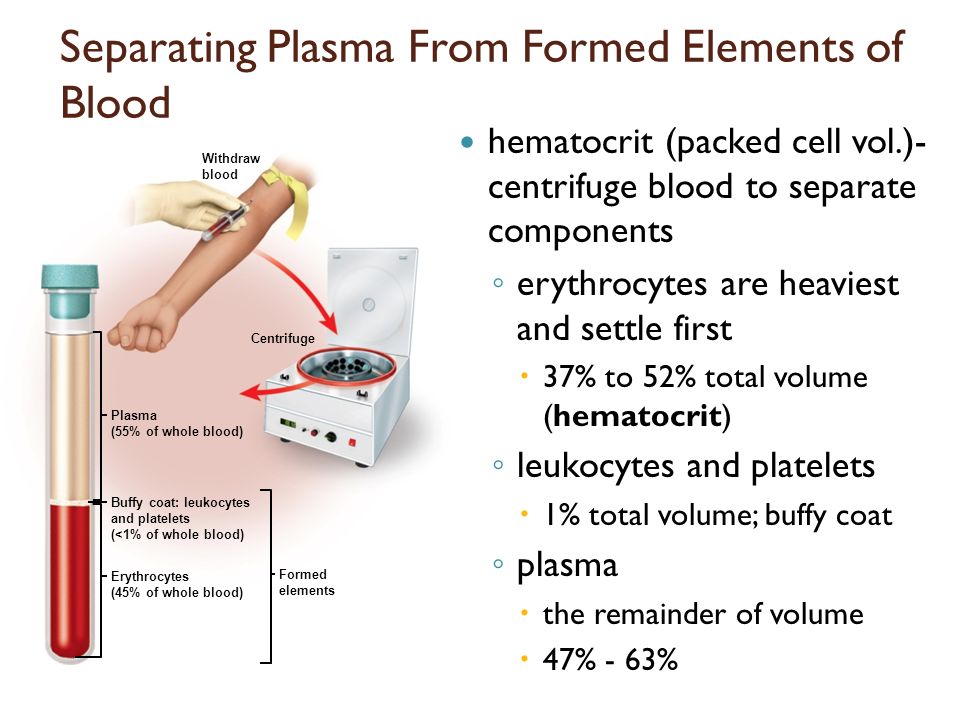
Specimen Requirements and Procedure
For the macro-hematocrit method, venous blood is taken as a random sample (i.e., no special precautions needed) maintaining proper aseptic precautions. The blood is either collected in a commercially available vacutainer containing ethylenediaminetetraacetic acid (EDTA) or in a vial/test tube with EDTA where vacutainer is not available[3]. For the microhematocrit method, the blood requirement is less, and single finger-prick blood is sufficient. Heparin filled capillary tube may is used to collect blood. However, if there is available blood with anticoagulant for other hematologic tests, a capillary tube without heparin can be used. For measurement of HCT in automated hematologic cell counter, blood with anticoagulant used for CBC is necessary.
Testing Procedures
The macro-hematocrit method uses a Wintrobe hematocrit tube, a centrifuge machine, and a Pasteur pipette. Blood is filled in Wintrobe hematocrit tube up to 100 mm mark by the help of Pasteur pipette. Care is taken not to leave any bubble in the blood column. For this, the tube is filled slowly with the tip of the pipette being always below the highest position of the blood column. Then, the tube gets placed in the centrifuge machine. When testing a single specimen, another blood-filled Wintrobe hematocrit tube is kept on the opposite holder to counterbalance. The spin setting is 3000 rpm for 30 min. After completion of the centrifugation, the tube is taken out, and RBC column height is reported as HCT. During the reporting, special precaution is necessary to omit the buffy coat, which is a combination of WBC and platelets. This layer should not be included in the HCT, as it may lead to false positive results.
Care is taken not to leave any bubble in the blood column. For this, the tube is filled slowly with the tip of the pipette being always below the highest position of the blood column. Then, the tube gets placed in the centrifuge machine. When testing a single specimen, another blood-filled Wintrobe hematocrit tube is kept on the opposite holder to counterbalance. The spin setting is 3000 rpm for 30 min. After completion of the centrifugation, the tube is taken out, and RBC column height is reported as HCT. During the reporting, special precaution is necessary to omit the buffy coat, which is a combination of WBC and platelets. This layer should not be included in the HCT, as it may lead to false positive results.
For the microhematocrit method, after filling the blood in a capillary tube, the two ends of the tube (commonly 75 mm long, 1 mm diameter) are sealed with clay sealant or heat. Then, it is centrifuged at a rate of 11000 to 12000 rpm for 4 to 5 min. Reading is with the help of the scale on a tube holder or microhematocrit card reader.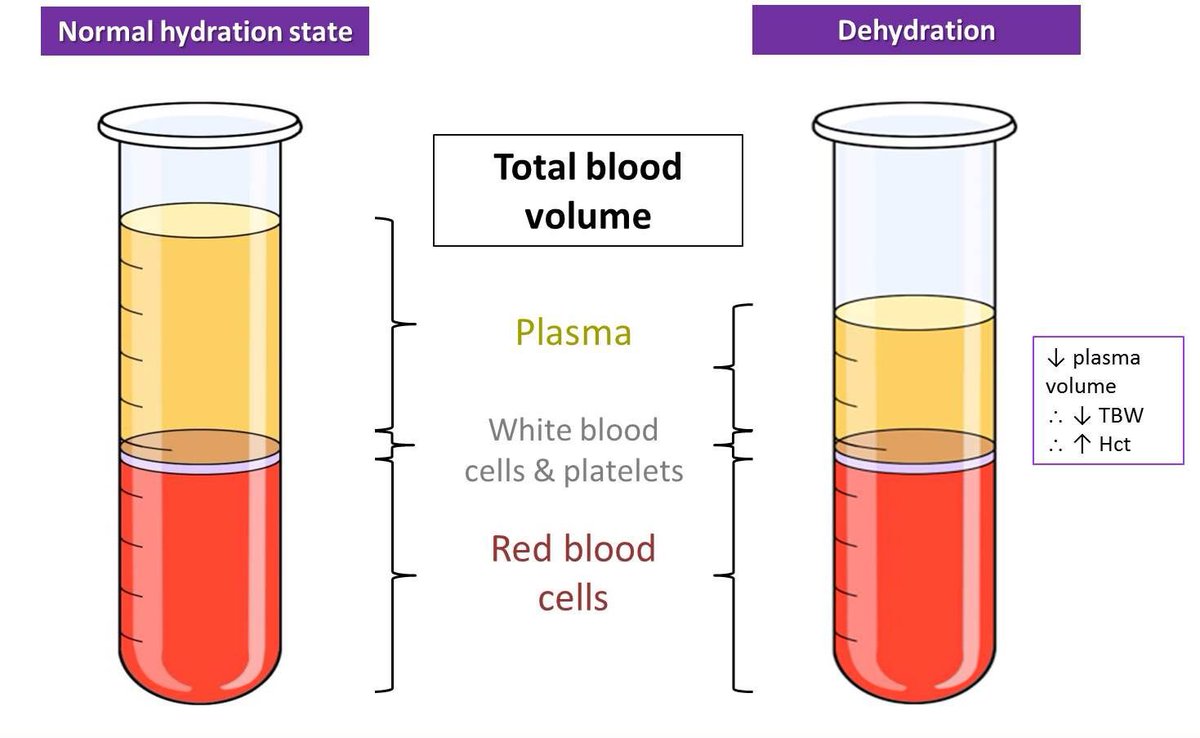
The automated analyzer measures the average RBC size and number by the “Coulter principle”[4]. In this method, the size and number of the RBCs is measurable by detecting impedance while the blood passes through a passage between two electrodes.
Interfering Factors
There are several physiological and pathological conditions where the HCT may deviate from its normal range. New-born babies show a high HCT, and it gradually decreases during the neonatal period[5]. Adult male shows higher HCT than an adult female.[6] Pregnant women show lower HCT due to hemodilution. In high altitude, the number of RBC becomes high due to persistent hypoxia; hence, the inhabitant of high altitude shows higher HCT. Methodological variation may provide a minor deviation of HCT tested for the same sample. In the macro-hematocrit method, there is an increased amount of trapped plasma (approximately 2%) in the packed RBC, which may give a higher HCT. This factor becomes minimized in the microhematocrit method, where the amount of trapped plasma is less as the diameter of the capillary tube is less than that of the Wintrobe hematocrit tube.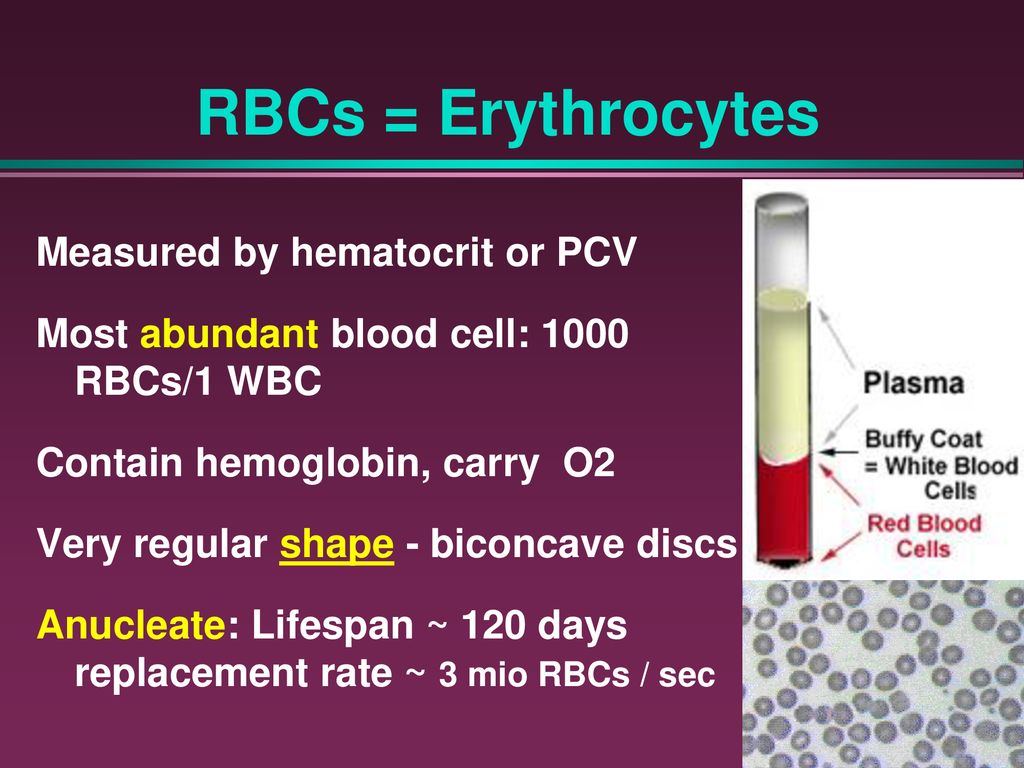 Blood collected from different sources may also show variation. Venous blood shows higher HCT than arterial blood. However, there is no difference in HCT between venous blood and finger prick blood.[7]
Blood collected from different sources may also show variation. Venous blood shows higher HCT than arterial blood. However, there is no difference in HCT between venous blood and finger prick blood.[7]
Results, Reporting, and Critical Findings
Wintrobe hematocrit tube has graduation 0 to 100 from below upwards. Hence, the highest level of packed RBC is the HCT in percentage. For the microhematocrit method, the reading is from the HCT card or scale. However, for these two methods, even without any graduation or scale, the HCT value can be calculated with a simple scale as we compare the length of the RBC column with the total length of the fluid column. The final report is a percentage. HCT, along with RBC count and hemoglobin (Hb) concentration, is used to report other blood indices manually as follows:
The mean corpuscular volume (MCV) calculation uses HCT and RBC count.
Mean corpuscular hemoglobin concentration (MCHC) is calculated with Hb concentration and HCT.
Clinical Significance
In primary health care settings, especially in resource-limited settings, macro-hematocrit and micro-hematocrit methods are two low-cost and simple tests for determining RBC in blood. Clinically, HCT is used to identify anemia and polycythemia along with other parameters (e.g., RBC count, Hb concentration). In anemia, where there are fewer RBCs in the circulating blood relative to the total volume of the blood, the HCT decreases.[8] In polycythemia, there is a higher number of RBCs in the blood; HCT increases. Smokers and chronic obstructive pulmonary disease (COPD) patients also have high HCT due to chronic hypoxia. The increase in HCT increases the viscosity of the blood, so does the peripheral resistance. Hence, patients with higher HCT may have higher blood pressure.
Quality Control and Lab Safety
Handling of blood should take place with the maintenance of proper aseptic precautions. The collected blood should be tested as soon as possible after collection. Prolonged storage at the room temperature would result in a change in the shape of the RBCs due to metabolism. After about 6 hours, the chances of hemolysis increase, which would give an erroneous result. In the macro-hematocrit method, the filing of the Wintrobe hematocrit tube requires proper care. In the microhematocrit method, the sealing of the capillary tube should be secure to prevent any leakage. The centrifuge machine should not be opened during the test to avoid erroneous results. The chances of error in the result will increase if the centrifugation is interrupted. Immediately after completion of the rotation, the operator should not open the lid should until after the complete stoppage of the rotation. For reuse of the Wintrobe hematocrit tube, proper cleaning is necessary as any foreign particle inside the tube would be counted either in the RBC column or plasma column.
Prolonged storage at the room temperature would result in a change in the shape of the RBCs due to metabolism. After about 6 hours, the chances of hemolysis increase, which would give an erroneous result. In the macro-hematocrit method, the filing of the Wintrobe hematocrit tube requires proper care. In the microhematocrit method, the sealing of the capillary tube should be secure to prevent any leakage. The centrifuge machine should not be opened during the test to avoid erroneous results. The chances of error in the result will increase if the centrifugation is interrupted. Immediately after completion of the rotation, the operator should not open the lid should until after the complete stoppage of the rotation. For reuse of the Wintrobe hematocrit tube, proper cleaning is necessary as any foreign particle inside the tube would be counted either in the RBC column or plasma column.
Enhancing Healthcare Team Outcomes
After the introduction of the automated hematology cell counters, the usage of macro-hematocrit and microhematocrit method is less used nowadays.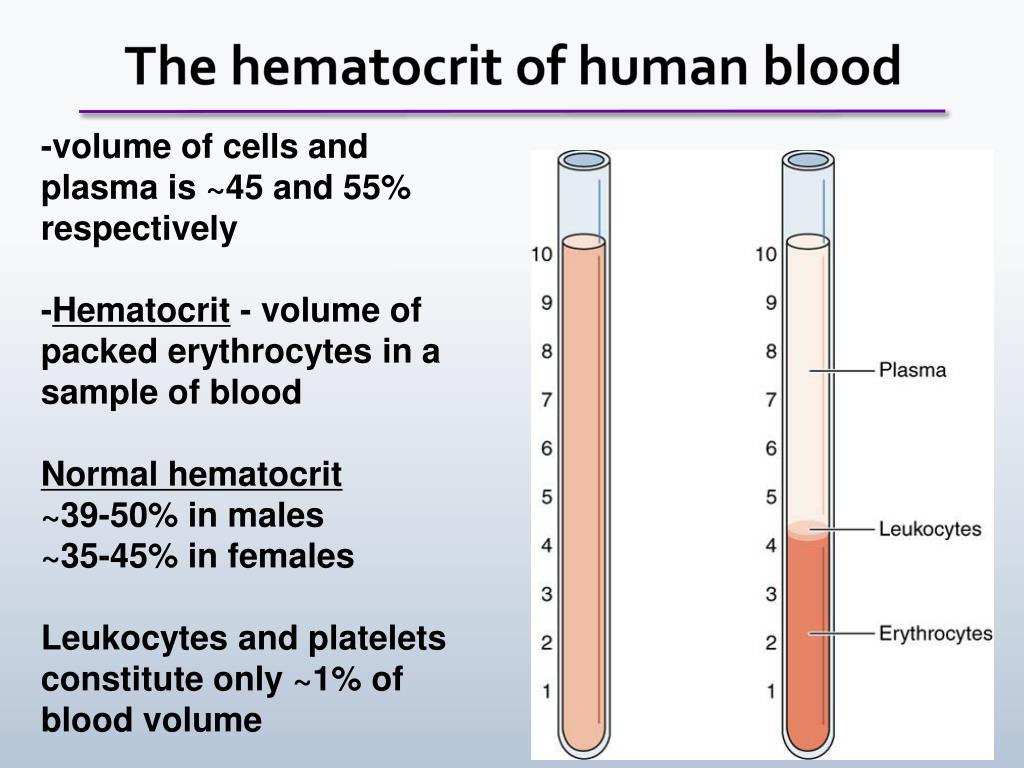 However, in many resource-poor settings, it is still used for the diagnosis of anemia and polycythemia and monitoring response to treatment. In a rural healthcare facility, it is a more accurate method for identifying anemia than the total RBC count, as chances of error in manual RBC count is very high. The micro-hematocrit method is more acceptable as it requires less amount of blood, and the testing time is very less in comparison to the macro-hematocrit method. Due to the requirement of less amount of blood and less time for the test, it may be useful in a mass survey.
However, in many resource-poor settings, it is still used for the diagnosis of anemia and polycythemia and monitoring response to treatment. In a rural healthcare facility, it is a more accurate method for identifying anemia than the total RBC count, as chances of error in manual RBC count is very high. The micro-hematocrit method is more acceptable as it requires less amount of blood, and the testing time is very less in comparison to the macro-hematocrit method. Due to the requirement of less amount of blood and less time for the test, it may be useful in a mass survey.
Review Questions
Access free multiple choice questions on this topic.
Comment on this article.
Figure
Wintrobe hematocrit tube containing components of blood after centrifugation. Contributed by Shaikat Mondal, MD
References
- 1.
Fred HL. Maxwell Myer Wintrobe: new history and a new appreciation. Tex Heart Inst J. 2007;34(3):328-35.
 [PMC free article: PMC1995040] [PubMed: 17948084]
[PMC free article: PMC1995040] [PubMed: 17948084]- 2.
Billett HH. Hemoglobin and Hematocrit. In: Walker HK, Hall WD, Hurst JW, editors. Clinical Methods: The History, Physical, and Laboratory Examinations. 3rd ed. Butterworths; Boston: 1990. [PubMed: 21250102]
- 3.
Bamberg R, Gwyn T, Miller J, Thompson M, Transou P. The effects of over-anticoagulated blood on hematocrit values by the microcentrifuge method. Clin Lab Sci. 2008 Summer;21(3):146-50. [PubMed: 18678135]
- 4.
Peng L, Wang W, Bai L. Performance evaluation of the Z2 coulter counter for WBC and RBC counting. Int J Lab Hematol. 2007 Oct;29(5):361-8. [PubMed: 17824917]
- 5.
Jopling J, Henry E, Wiedmeier SE, Christensen RD. Reference ranges for hematocrit and blood hemoglobin concentration during the neonatal period: data from a multihospital health care system. Pediatrics. 2009 Feb;123(2):e333-7. [PubMed: 19171584]
- 6.
Zeng SM, Yankowitz J, Widness JA, Strauss RG.
 Etiology of differences in hematocrit between males and females: sequence-based polymorphisms in erythropoietin and its receptor. J Gend Specif Med. 2001;4(1):35-40. [PubMed: 11324238]
Etiology of differences in hematocrit between males and females: sequence-based polymorphisms in erythropoietin and its receptor. J Gend Specif Med. 2001;4(1):35-40. [PubMed: 11324238]- 7.
Yang ZW, Yang SH, Chen L, Qu J, Zhu J, Tang Z. Comparison of blood counts in venous, fingertip and arterial blood and their measurement variation. Clin Lab Haematol. 2001 Jun;23(3):155-9. [PubMed: 11553055]
- 8.
Malenica M, Prnjavorac B, Bego T, Dujic T, Semiz S, Skrbo S, Gusic A, Hadzic A, Causevic A. Effect of Cigarette Smoking on Haematological Parameters in Healthy Population. Med Arch. 2017 Apr;71(2):132-136. [PMC free article: PMC5511531] [PubMed: 28790546]
Disclosure: Himel Mondal declares no relevant financial relationships with ineligible companies.
Disclosure: Saran Lotfollahzadeh declares no relevant financial relationships with ineligible companies.
Hematocrit test | Beacon Health System
Overview
A hematocrit (he-MAT-uh-krit) test measures the proportion of red blood cells in your blood.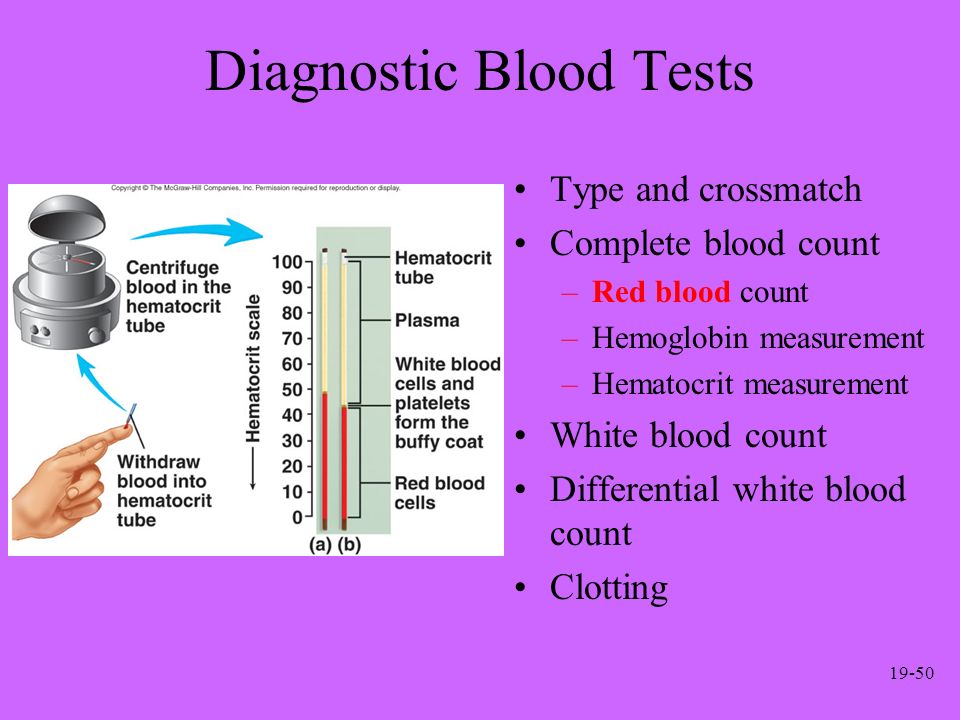 Red blood cells carry oxygen throughout your body. Having too few or too many red blood cells can be a sign of certain diseases.
Red blood cells carry oxygen throughout your body. Having too few or too many red blood cells can be a sign of certain diseases.
The hematocrit test, also known as a packed-cell volume (PCV) test, is a simple blood test.
Why it’s done
A hematocrit test is part of a complete blood count (CBC). Measuring the proportion of red blood cells in your blood can help your doctor make a diagnosis or monitor your response to a treatment.
A lower than normal hematocrit can indicate:
- An insufficient supply of healthy red blood cells (anemia)
- A large number of white blood cells due to long-term illness, infection or a white blood cell disorder such as leukemia or lymphoma
- Vitamin or mineral deficiencies
- Recent or long-term blood loss
A higher than normal hematocrit can indicate:
- Dehydration
- A disorder, such as polycythemia vera, that causes your body to produce too many red blood cells
- Lung or heart disease
How you prepare
The hematocrit is a simple blood test. You won’t need to fast before the test or make other preparations.
You won’t need to fast before the test or make other preparations.
What you can expect
The blood sample is generally drawn with a needle from a vein in your arm. You may feel some tenderness at the site, but you’ll be able to resume normal activities afterward.
Results
Results from your hematocrit test are reported as the percentage of your blood volume that’s composed of red blood cells. Normal ranges vary substantially with race, age and sex. The definition of normal red-blood cell percentage also varies from one medical practice to another.
Generally, a normal range is considered to be:
- For men, 38.3 to 48.6 percent
- For women, 35.5 to 44.9 percent
For children ages 17 and younger, the normal range varies by age and sex.
Your hematocrit test provides just one piece of information about your health. Talk to your doctor about what your hematocrit test result means in light of the symptoms you’re experiencing and the results of other diagnostic tests.
Accuracy of test results
A number of factors can affect the outcome of a hematocrit test and yield inaccurate or misleading results, including:
- Living at a high altitude
- Pregnancy
- Significant recent blood loss
- Recent blood transfusion
- Severe dehydration
Your doctor will take into account possible complicating factors when interpreting the results of your hematocrit test. Your doctor may want to repeat the hematocrit test and do other blood tests if results provide conflicting or unexpected information.
Last Updated: December 14th, 2021
© 1998-2023 Mayo Foundation for Medical Education and Research (MFMER). All rights reserved.
Terms of Use
Hematocrit – Blood test – Deciphering tests online
Synonyms : hematocrit, HCT, Ht, Crit, packed cell volume, PCV
What is hematocrit?
Hematocrit is the percentage (%) of the total blood volume that is made up of erythrocytes, that is, it is the ratio of erythrocytes to blood plasma.
Decipher “Biochemical analysis of blood”
Decipher “General analysis of urine”
Erythrocytes carry oxygen throughout the body. Having too many or too few red blood cells in the blood can be a sign of certain medical conditions.
The hematocrit value is often used to assess the severity of anemia, due to which it can drop to 15-25%. Hematocrit should not be assessed immediately after a blood transfusion or blood loss, as this may cause a falsely high or falsely low result.
Measurement units
Hematocrit (Ht) is expressed as a percentage (%) of the total blood volume or in liters per liter (l/l) – the corresponding proportion of formed elements in 1 liter of blood (480 ml of cells in 1 liter of blood = 0, 48 liter/liter = 48%).
Under normal conditions, there is a linear relationship between hematocrit and hemoglobin concentration.
Normal hematocrit
Normal hematocrit values may vary slightly depending on age, gender, pregnancy, place of residence, use of different diagnostic methods.
The following hematocrit values are generally considered normal:
- Adult men: 42-54%
- Adult women: 38-46%0032
For residents of high altitudes, hematocrit norms increase as the altitude at which people live increases. This is a consequence of the lower concentration of oxygen in the atmosphere, which requires more red blood cells to provide the body with the necessary amount of oxygen.
Hematocrit can be low or high for various reasons. But it should be remembered that its level in some cases may be assessed incorrectly (with loss of blood, during transfusion, in the mountains). According to the study, moving from a supine position to a sitting position can cause clinically significant increases in hemoglobin, hematocrit, and red blood cell count.
Hematocrit during pregnancy
Blood volume increases during pregnancy. But the volume of plasma increases more than the volume of erythrocytes, which leads to relative anemia. There is a physiological decrease in the number of erythrocytes (RBC), as well as the level of hemoglobin (Hb) and hematocrit (Hct). Different laboratories may have different hematocrit reference values. Below is the approximate content of hematocrit in the blood during pregnancy.
There is a physiological decrease in the number of erythrocytes (RBC), as well as the level of hemoglobin (Hb) and hematocrit (Hct). Different laboratories may have different hematocrit reference values. Below is the approximate content of hematocrit in the blood during pregnancy.
In the first trimester of pregnancy, hematocrit is normally 31-41%. By 6-12 weeks, the volume of blood plasma has already increased by approximately 10-15%. The blood thins, and the concentration of cells in it decreases. Therefore, in a pregnant woman, a slight decrease in hematocrit and hemoglobin is allowed by the end of the first / middle of the second month of pregnancy. If the indicator falls below the norm, then we can talk about the manifestation of anemia.
In the second trimester, the volume of circulating blood steadily increases. The risk of developing iron deficiency anemia at this time increases. Therefore, obstetrician-gynecologists attach particular importance to the mandatory regular monitoring of the expectant mother and hematocrit indicators. Reference hematocrit values in the second trimester are 30-39%.
Reference hematocrit values in the second trimester are 30-39%.
Hematocrit reaches its lowest level in the third trimester. From 30 to 34 weeks of pregnancy, the fastest rate of increase in circulating blood volume is observed, after which this volume changes slightly until delivery. Hematocrit peaks at 33 weeks. Hematocrit below the normal level (28-40%) should be considered as a pathology.
Hematocrit values above normal during pregnancy are also classified as pathological.
Normal hematocrit in children
In newborns and especially premature babies, high hematocrit values are normal. If the hematocrit level in a blood test from a vein exceeds 65%, then polycythemia is diagnosed (an increased level of red blood cells). Closer to the age of three months, the hematocrit drops. Reference values for hematocrit are approximately 30-44%, depending on the age of the child.
Reduced or increased hematocrit in a child with minor deviations from the norm, most often caused by the influence of external factors.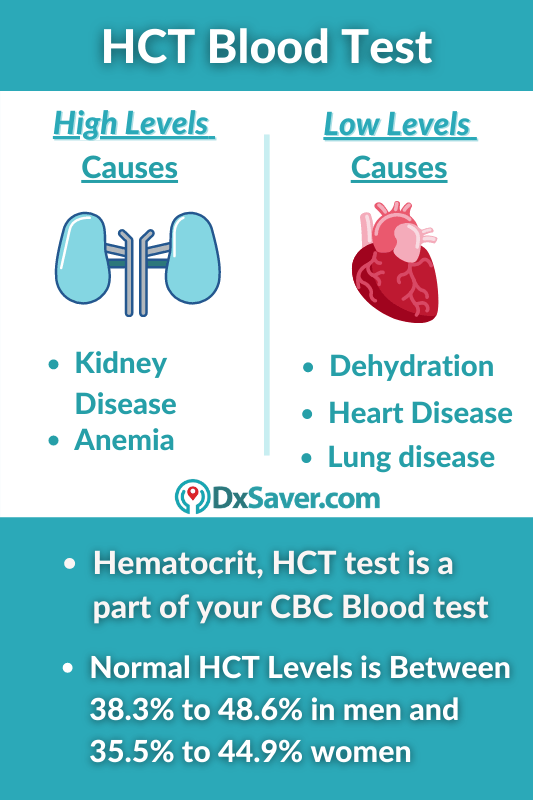 If these deviations are significant, then it is necessary to look for the causes of such a state.
If these deviations are significant, then it is necessary to look for the causes of such a state.
Hematocrit above normal
A high hematocrit may reflect an absolute increase in red blood cells or a decrease in plasma volume. An increase in hematocrit means that the blood thickens, which means that the risk of blood clots increases. This causes oxygen deficiency of the organ in which the thrombus has formed, and, accordingly, a violation of its functions (stroke, heart attack).
Causes of increased hematocrit:
- Dehydration (for burns, diarrhea, taking diuretics). With sufficient fluid intake, the hematocrit returns to normal.
- Diseases of the heart and lungs. The body tries to compensate for the lack of oxygen in the blood by producing more red blood cells.
- Smoking, living high above sea level (compensation for a decrease in the level of oxygen in the body)
- Neoplasms in the kidneys, accompanied by increased production of erythropoietin.

- Polycythemia vera (polycythemia vera) is a rare disorder that causes an abnormal production of red blood cells.
High hematocrit during pregnancy
Elevated hematocrit in pregnancy signals blood clotting, increasing the burden on the cardiovascular system and increasing the likelihood of blood clots.
High hematocrit may be a sign of preeclampsia (preeclampsia).
High hematocrit in a child
If, when determining the results of a blood test, the hematocrit is very high (more than 65%) in a newborn child, it means that the baby was in a state of hypoxia. That is, the child experienced oxygen deficiency during the prenatal period or during childbirth. The future development of the baby depends on the duration of the hypoxia period, because during oxygen starvation, the blood supply to the brain is disturbed.
At an older age, the same pathological conditions as in adults can become the reasons for the increase.
Hematocrit below normal
A low hematocrit reflects a low number of circulating red blood cells and is an indication of reduced oxygen carrying capacity.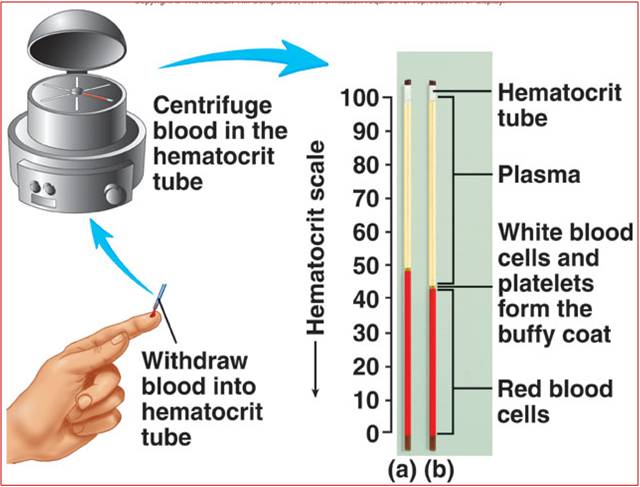 In this condition, patients have shortness of breath, a constant feeling of fatigue, palpitations, pale skin, hair loss. With a decrease in hematocrit, anemia is diagnosed.
In this condition, patients have shortness of breath, a constant feeling of fatigue, palpitations, pale skin, hair loss. With a decrease in hematocrit, anemia is diagnosed.
Reasons for low hematocrit:
- Significant blood loss (due to trauma, chronic bleeding).
- Deficiency of nutrients in the body (iron, folic acid, vitamins B12, B6).
- Increased destruction of red blood cells (hemolytic anemia, sickle cell anemia).
- Bone marrow disorders (aplastic anemia, cancer, chemotherapy).
- Kidney disease resulting in decreased production of erythropoietin, a hormone that stimulates the bone marrow to produce red blood cells.
Low hematocrit during pregnancy
A slight decrease in hematocrit due to increased blood volume is normal during pregnancy. With a decrease in hematocrit below the reference values, one speaks of anemia.
In 90% of cases, the cause of low hematocrit during pregnancy is iron deficiency anemia.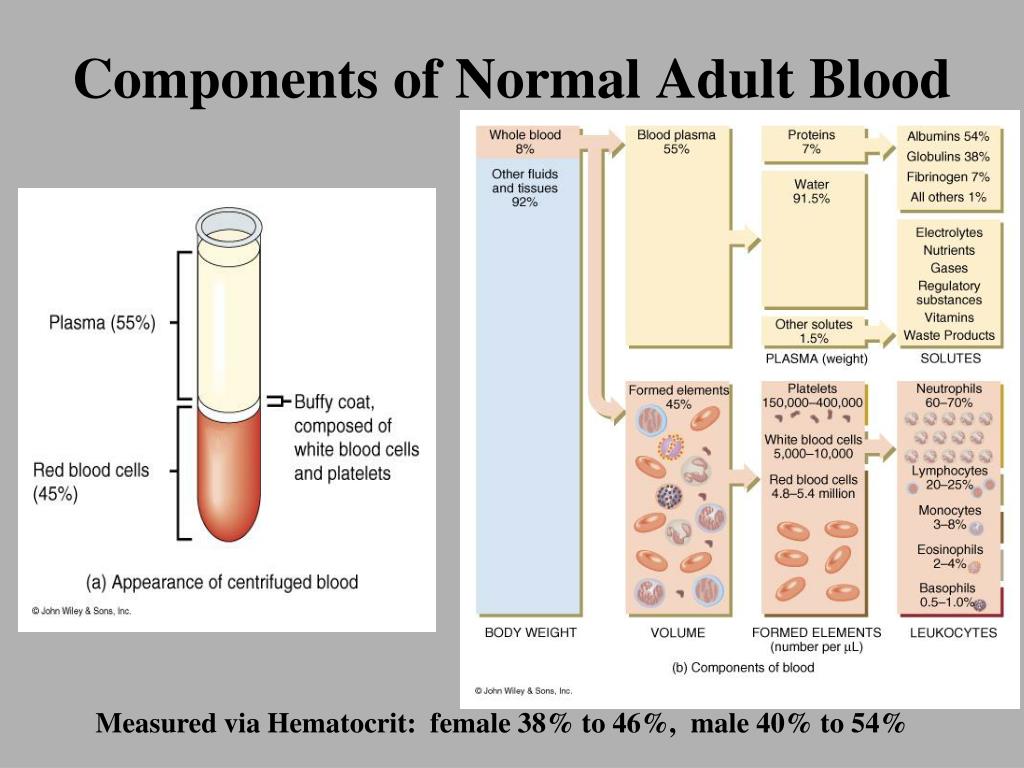 The state of health of a pregnant woman with a low hematocrit worsens, since the cells of all organs experience oxygen starvation (hypoxia), the alkaline balance is disturbed. You may experience fatigue, weakness, headache, palpitations and shortness of breath. The heart and blood vessels work in an increased load mode, the work of other organs and systems is disrupted.
The state of health of a pregnant woman with a low hematocrit worsens, since the cells of all organs experience oxygen starvation (hypoxia), the alkaline balance is disturbed. You may experience fatigue, weakness, headache, palpitations and shortness of breath. The heart and blood vessels work in an increased load mode, the work of other organs and systems is disrupted.
Low hematocrit in a child
A decrease in hematocrit in children may be due to malnutrition (lack of nutrients) and is also observed with a significant growth spurt. These changes are easily correctable.
In children over 1 year of age and adolescents, acquired types of anemia are more common, especially iron deficiency anemia. In term infants under 6 months of age, iron deficiency is an unlikely cause of anemia.
Deciphering a blood test on the analyzer – Article in Yekaterinburg
In modern hematological analyzers, the ability to decipher from 5 to 24 blood parameters is implemented:
- WBC (white blood cells – white blood cells, leukocytes).
 The indicator characterizes the absolute content of leukocytes.
The indicator characterizes the absolute content of leukocytes. - RBC (red blood cells – red blood cells, erythrocytes) shows the absolute content of erythrocytes in the blood.
- HGB (Hb, hemoglobin, hemoglobin) — the concentration of hemoglobin in whole blood.
- HCT (hematocrit, hematocrit). Hematocrit determines the ratio of the volume of formed elements to plasma.
- PLT (platelets, platelets) – absolute number of platelets
Erythrocyte indices
- MCV – average volume of erythrocyte in microns or fl. Using the analysis, you can determine the presence of microcytosis, normocytosis, macrocytosis.
- MCH is the average amount of hemoglobin in an erythrocyte in absolute units. The analysis indicates the color index.
- MCHC is the average concentration of hemoglobin in one erythrocyte, i.e. its degree of saturation with hemoglobin.
Platelet indices
- MPV (mean platelet volume) – the average number of platelets
- PDW – characterizes platelet heterogeneity, i.
 e. their relative width of distribution in volume.
e. their relative width of distribution in volume. - PCT (platelet crit) – thrombocrit – the percentage of whole blood volume occupied by platelets.
Leukocyte indices
- LYM% (LY%) (lymphocyte) — percentage of lymphocyte concentration.
- LYM# (LY#) (lymphocyte) — absolute number of lymphocytes.
- MXD% is the relative percentage of a mixture consisting of monocytes, basophils and eosinophils.
- MXD# is the absolute amount of a mixture consisting of monocytes, basophils and eosinophils.
- NEUT% (NE%) (neutrophils) – percentage of neutrophils.
- NEUT# (NE#) (neutrophils) — absolute number of neutrophils.
- MON% (MO%) (monocyte) – percentage of monocytes
- MON# (MO#) (monocyte) – absolute number of monocytes
- EO% – relative percentage of eosinophils.
- EO# is the absolute number of eosinophils.
- BA% – relative percentage of basophils.
- BA# is the absolute number of basophils.

- IMM% – relative percentage of immature granulocytes.
- IMM# is the absolute number of immature granulocytes.
- ATL% – relative percentage of atypical lymphocytes.
- ATL# is the absolute number of atypical lymphocytes.
- GR% – relative percentage of granulocytes.
- GR# is the absolute number of granulocytes.
RBC indices
- RBC/HCT – mean volume of red blood cells.
- HGB/RBC is the average amount of hemoglobin in an erythrocyte.
- HGB/HCT — average saturation of erythrocyte hemoglobin.
- RDW – Red cell Distribution Width – “the width of the red blood cell distribution.” Characterizes the heterogeneity of erythrocytes.
- RDW-SD is the standard deviation of the distribution width of erythrocytes by volume.
- RDW-CV – coefficient of variation in the relative width of the distribution of erythrocytes by volume.
- P-LCR is a coefficient indicating the number of large platelets.


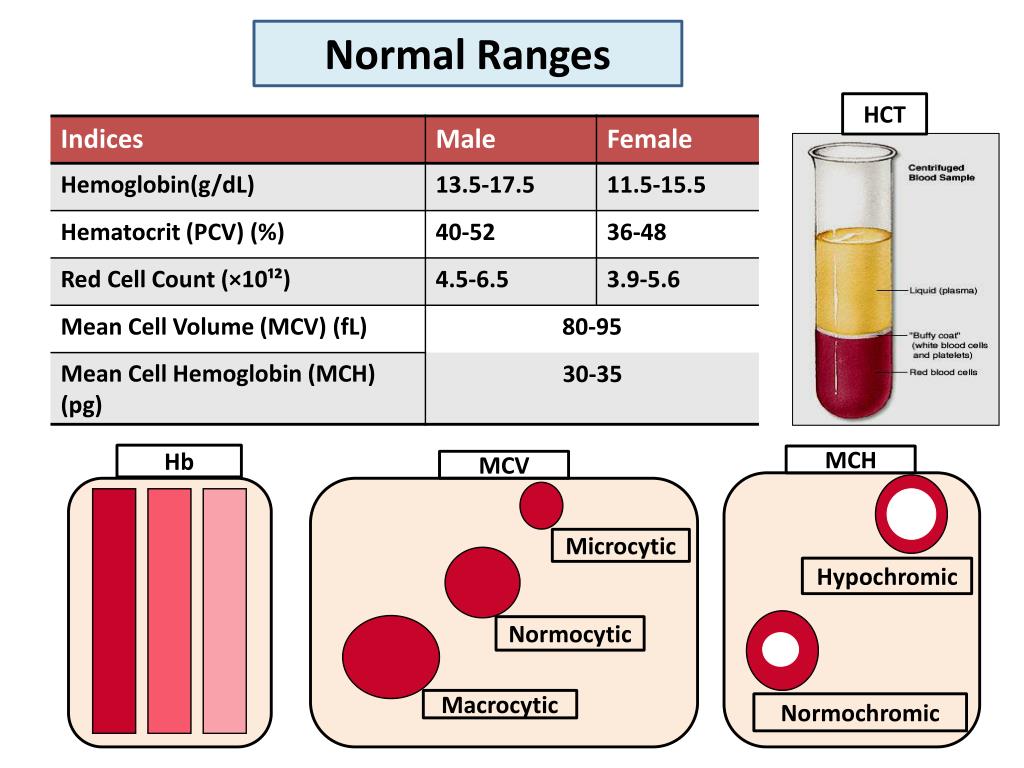 [PMC free article: PMC1995040] [PubMed: 17948084]
[PMC free article: PMC1995040] [PubMed: 17948084]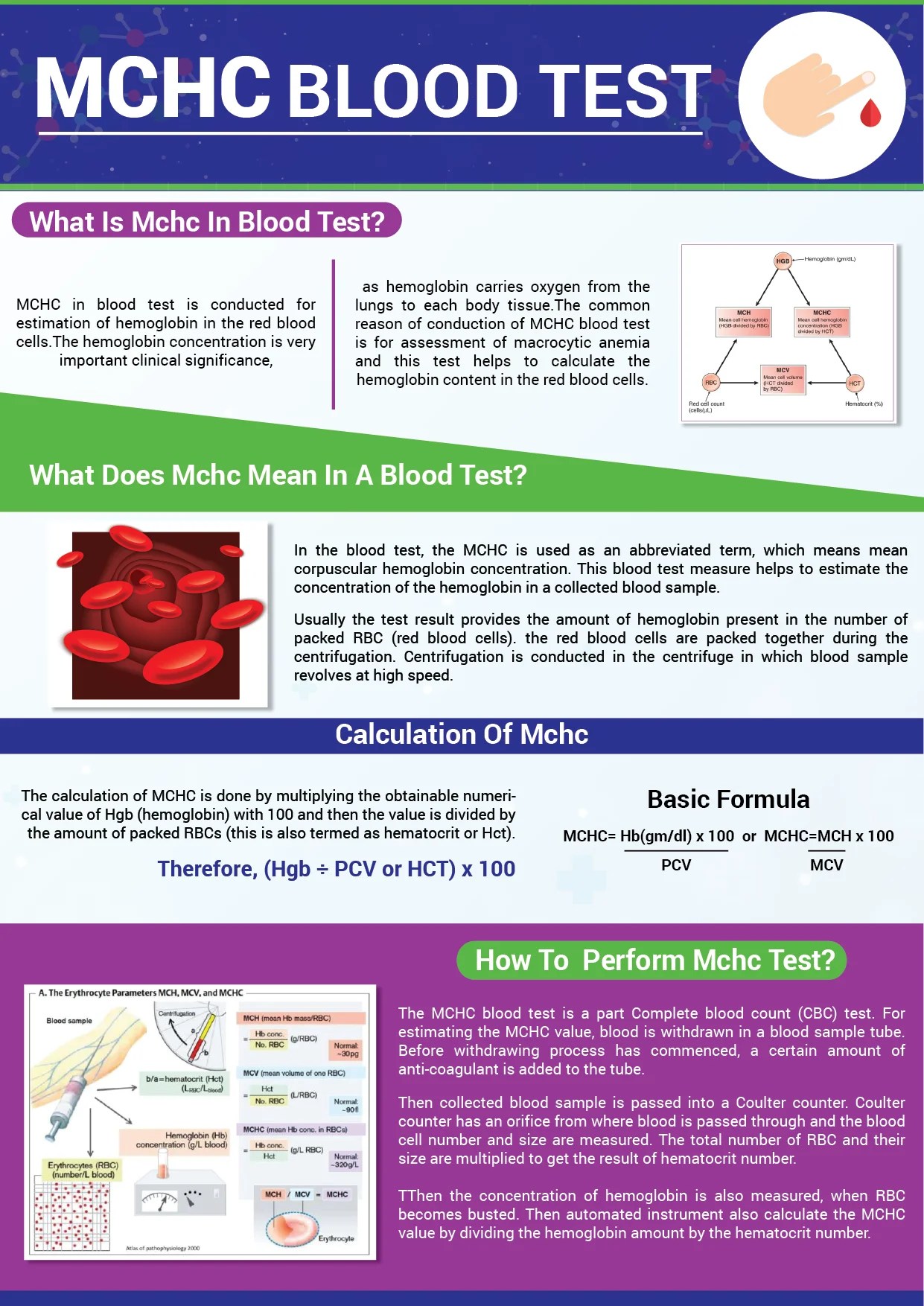 Etiology of differences in hematocrit between males and females: sequence-based polymorphisms in erythropoietin and its receptor. J Gend Specif Med. 2001;4(1):35-40. [PubMed: 11324238]
Etiology of differences in hematocrit between males and females: sequence-based polymorphisms in erythropoietin and its receptor. J Gend Specif Med. 2001;4(1):35-40. [PubMed: 11324238]+measures+how+much+space+in+the+blood+is+occupied+by+red+blood+cells..jpg)
 The indicator characterizes the absolute content of leukocytes.
The indicator characterizes the absolute content of leukocytes. e. their relative width of distribution in volume.
e. their relative width of distribution in volume.
